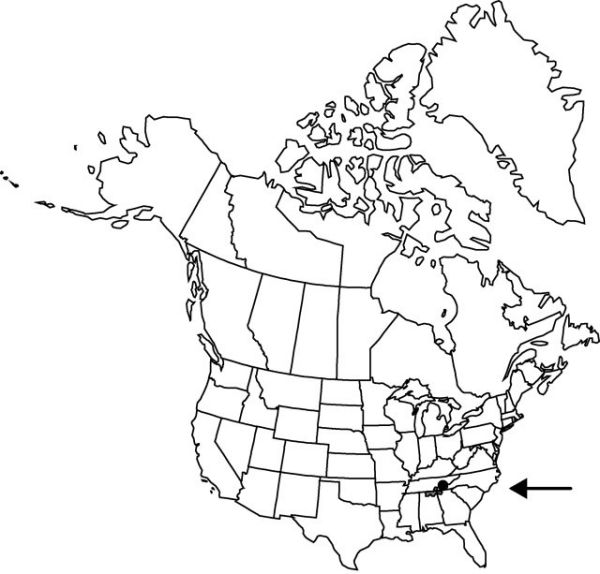Trillium decumbens
Biltmore Bot. Stud. 1: 158. 1902.
Rhizomes short, thick. Scapes 1–2, decumbent, usually by an S-shaped curvature, round in cross-section, 0.5–2 dm, somewhat stout, slightly expanded toward bracts, densely puberulent, especially just below bracts and on bases of main bract veins beneath. Bracts appearing early in season, in good condition for only a few weeks after anthesis, dying back to semipersistent bases early, resting on ground surface, sessile; blade strongly mottled in shades of green and bronze and with silvery overlay, mottling becoming obscure with age, ovate to suborbicular, 4–12 × 3.3–7 cm, apex acute to rounded. Flower erect, odor unreported; sepals divergent, green or maroon-streaked, lanceolate-ovate, 22–48 × 9–14 mm, margins entire, flat, apex acute; petals long-lasting, rigidly erect, ± connivent, ± concealing stamens and ovary, dark maroon-purple when fresh, fading especially distally to dull reddish-brown, greenish brown, or with creamy yellow tones, very rarely pale lemon yellow forms occur, twisted (but not spiraled), linearlanceolate or oblanceolate, 4–8+ × 0.7–1 cm, thick-textured, margins entire, apex acute; stamens erect, straight, dark purple, 10–25 mm; filaments dark purple, 2–5 mm; anthers straight, dark purple, 9–20 mm, dehiscence extrorse; connectives broad, extending to 3.5–4 mm beyond anther sacs; ovary dark purple, oval, 6-angled, 5–10 mm; stigmas erect, divergent-recurved, distinct, sessile, pink or white, subulate, 4.5–8 mm. Fruits baccate, dark purple, broadly ovoid to subglobose, crownlike, strongly ridged, 1–1.5 × 1 cm, pulpy but not juicy, present and enlarging on naked scapes until early autumn. 2n = 10.
Phenology: Flowering late winter–spring (mid Mar–Apr).
Habitat: Thin, open rocky wooded slopes, mature deciduous woodlands, rocky talus and disintegrating shale, flats (floodplains) of small streams and adjacent slopes near river entrance
Elevation: 50–200 m
Distribution

Ala., Ga., Tenn.
Discussion
Trillium decumbens occurs in the Ridge and Valley and Cumberland Plateau physiographic provinces. It has a large, deep, horizontal rhizome, the growing point of which always faces downslope.
Selected References
None.
Lower Taxa
"compressed-shortened" is not a number. "elongated" is not a number."thick" is not a number."dm" is not declared as a valid unit of measurement for this property."thicker" is not a number.